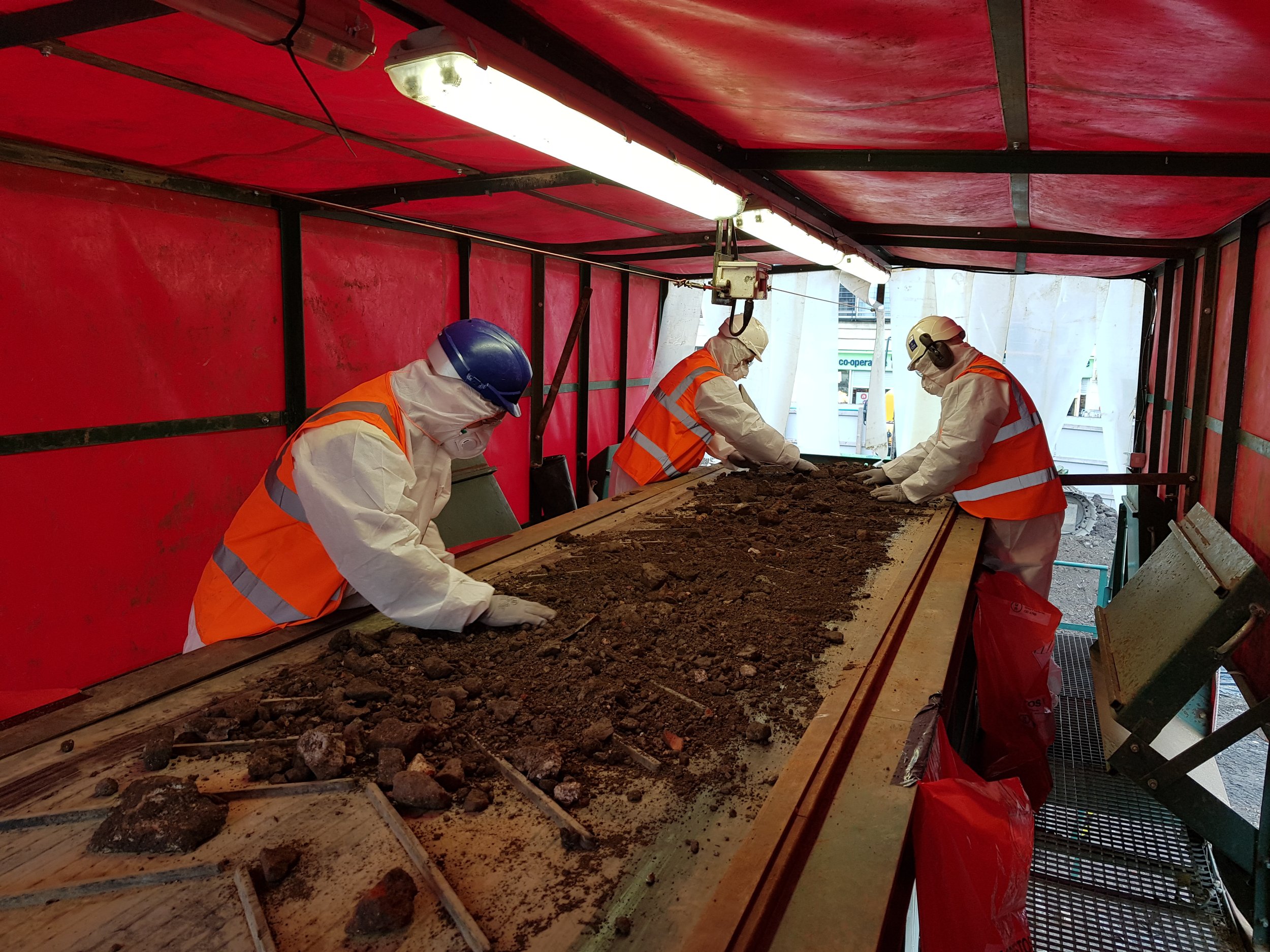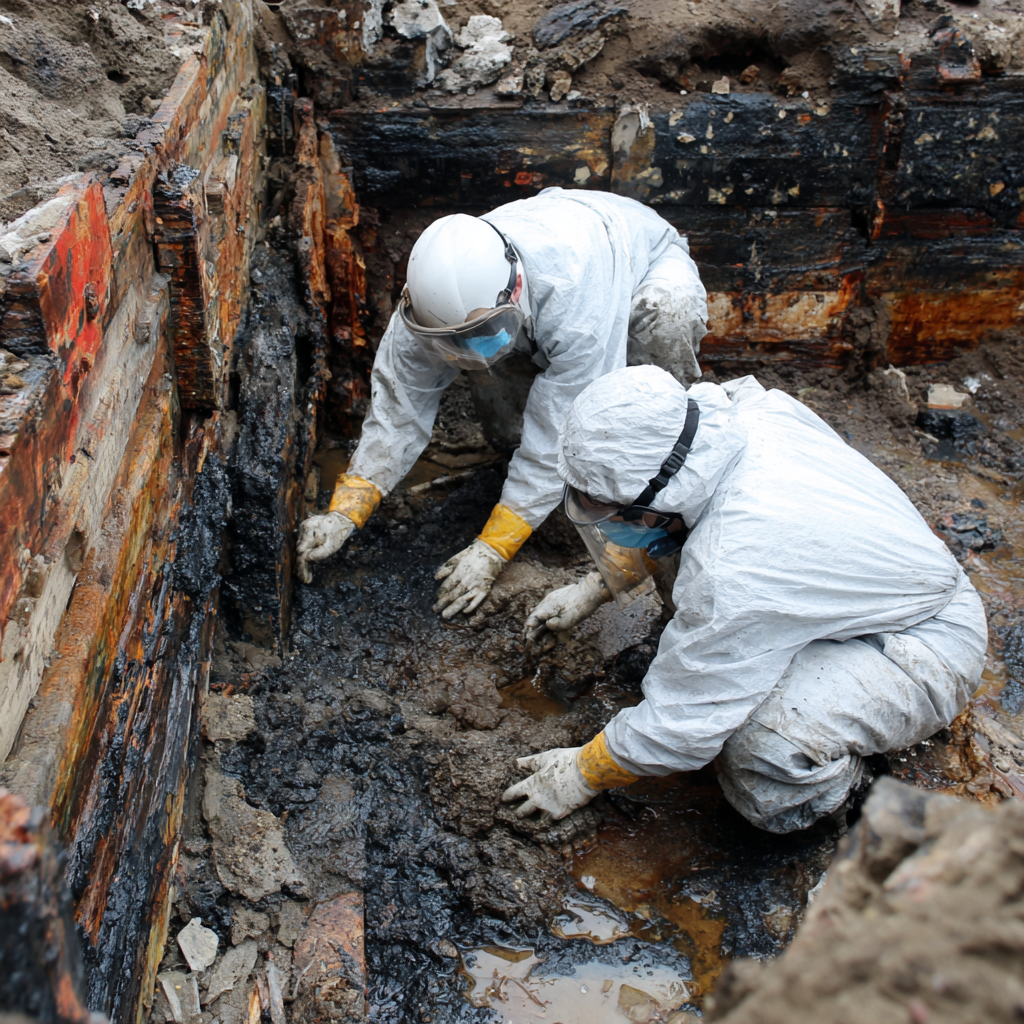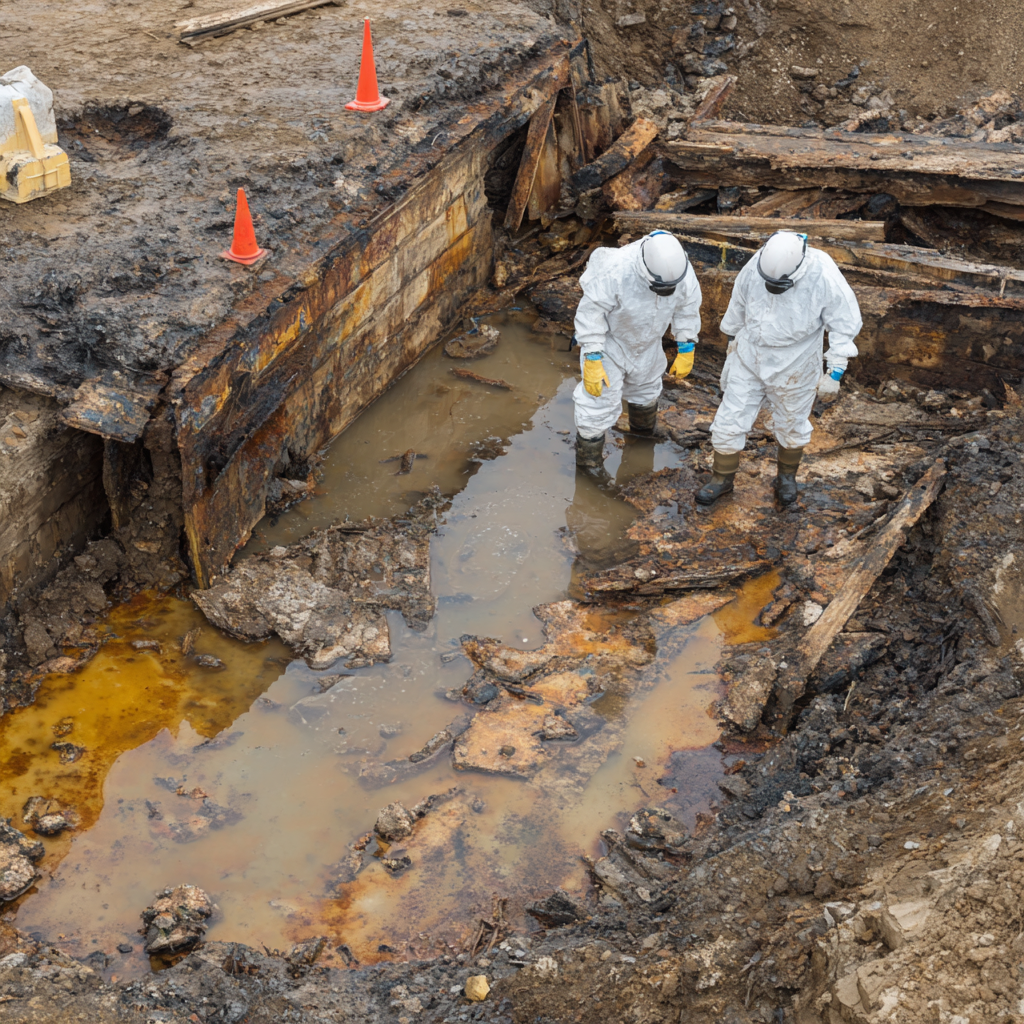How to identify and manage asbestos on construction sites
A practical guide for Developers and Site Managers
Despite being banned in the UK since 1999, asbestos remains one of the most common and dangerous contaminants encountered on construction and remediation sites.
Found in buildings, infrastructure, and soil, asbestos presents serious health risks to workers and the public if disturbed - and can cause costly delays if not managed properly.
This guide outlines how to identify, assess, and safely deal with asbestos during construction or land remediation projects.
Why Asbestos is still a risk
Asbestos was widely used throughout the 20th century in over 3,000 building products - from insulation and ceiling tiles to pipe lagging and cement sheeting.
Today, it remains a hidden risk on:
Redevelopment of sites with pre-2000 buildings and structures
Former industrial or military land
Demolition and soft-strip projects
Brownfield sites with buried or fly-tipped waste
When asbestos fibres become airborne and inhaled, they can lead to life-threatening conditions including mesothelioma and lung cancer. The risk is greatest when materials are disturbed without control measures in place.
Common forms of Asbestos found on site
The three most common types of asbestos encountered in UK construction projects are:
Chrysotile (White Asbestos)
Often found in roofing sheets, floor tiles, and pipe laggingAmosite (Brown Asbestos)
Used in insulation board, ceiling tiles, and fireproofingCrocidolite (Blue Asbestos)
Typically found in sprayed coatings and old pipe insulation
Asbestos can also be found buried in the ground or within construction and demolition waste, making it essential to remain alert beyond buildings themselves.
Churngold’s approach to Asbestos Management
We take a rigorous, compliant approach to asbestos across remediation and enabling works. Here’s how we typically manage asbestos risk:
1. Desktop study and risk flagging
Historical site assessment to identify known risks
Review of prior use, demolition records, and site history
Planning and method statements account for asbestos where relevant
2. Survey and sampling
Asbestos Management or Refurbishment/Demolition (R&D) Surveys carried out by accredited professionals
Soil sampling and lab analysis for buried or fly-tipped asbestos
Air monitoring where risk of fibre release is high
3. Risk assessment and action plan
Clear decision-making framework based on survey findings
Isolation, encapsulation, or removal strategies
Definition of notifiable and non-notifiable works in line with HSE guidance
4. Licensed removal and site control
Collaboration with licensed asbestos removal contractors
RAMS (Risk Assessments and Method Statements) and COSHH-compliant procedures
Fibre suppression, airlock systems, and exclusion zones enforced
5. Validation and waste disposal
Post-removal validation and air testing
Classification and secure transfer of asbestos-containing waste to licensed facilities
Full documentation for compliance and audit trail
When to involve Churngold
We recommend involving our team early in any project involving:
Demolition of structures built before 2000
Brownfield redevelopment or land remediation
Sites with suspected fly-tipped or buried waste
Earthworks that may disturb existing services or substructure materials
Pre-construction planning where asbestos is flagged in surveys
We can advise on cost-effective sequencing of works, ensuring that asbestos risks are dealt with before they disrupt your programme.
Need advice on a live site?
We work with developers, contractors, and consultants to manage asbestos safely - from survey review and planning advice through to full site remediation.
Get in touch for practical, professional support on your next project.





